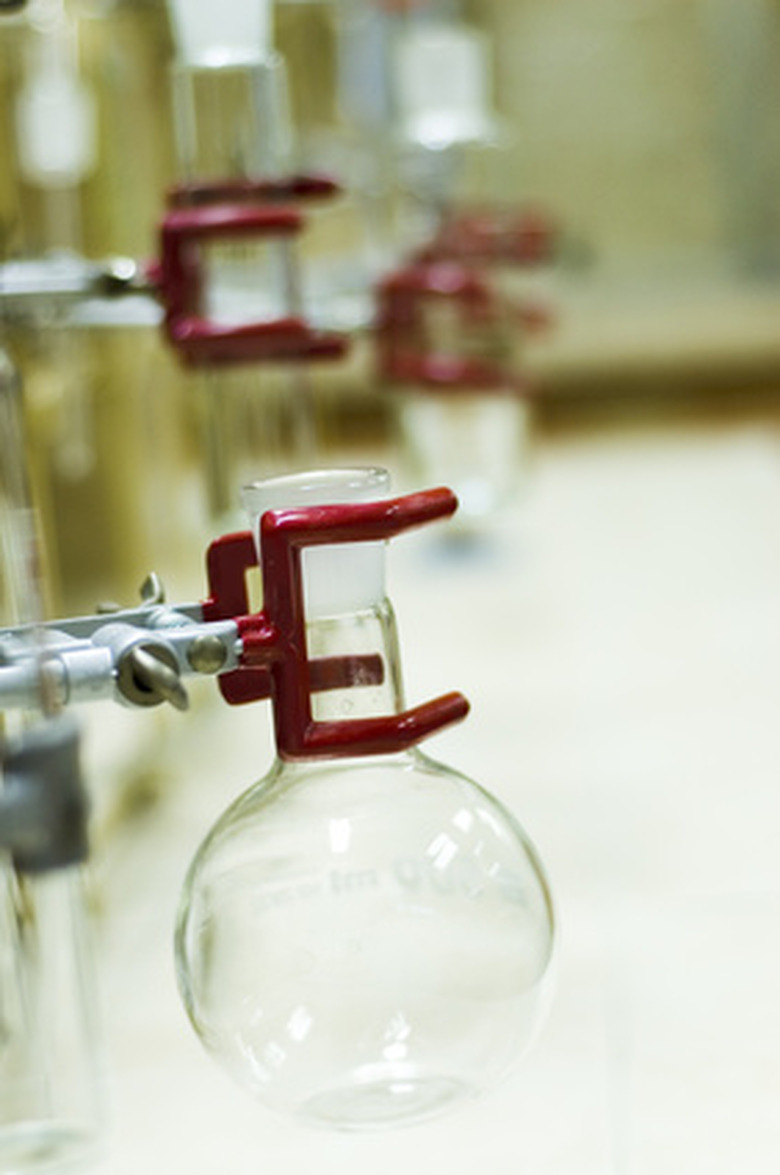How To Burn Potassium Nitrate
Potassium nitrate, commonly known as saltpeter, is a chemical compound that is a solid at room temperature. By itself, it is not explosive, but it can create a highly explosive, exothermic reaction if in contact with reducing agents. That is why potassium nitrate is used commonly in fireworks and gunpowder and why it is critical to learn how to burn potassium nitrate safely.
Step 1
Put on safety goggles and gloves to ensure the highest level of safety. Put on a long-sleeve shirt. Due to the highly explosive nature of the reaction, you should cover all parts of your body.
Step 2
Place the potassium nitrate in the flask and place it on gentle heat. The potassium nitrate will not ignite by itself as it is an oxidizer and only provides an oxygen-rich environment so other compounds can ignite.
Step 3
Add a reducing agent to the flask. Examples of reducing agents include sulfur or charcoal-based compounds. Once heated, the potassium nitrate will produce enough oxygen for the reducing agent to react.
Step 4
Increase heat until a reaction takes place. The flame should burn a purple or lilac color due to the presence of potassium. The reaction may be explosive, so it is necessary to be cautious and aware of the reaction as it occurs.
Step 5
Wait for the reaction to stop. Once the reaction is finished, turn off the heat source and wait for the flask to cool down. Test the temperature of the flask by quickly touching it for a second. If it is not hot, remove the flask and dispose of the remaining chemicals properly.
Things Needed
- Flask
- Heat source
- Reducing agent
- Safety goggles
- Long-sleeve jacket
- Gloves
TL;DR (Too Long; Didn't Read)
Clear the area around the heat source to make sure nothing is damaged during the reaction.
Do not dump the chemicals down the drain. Always dispose of chemical compounds properly. You do not want to contaminate or pollute the environment after performing a chemical reaction.
Warning
Do not touch the flask while the reaction is under way. It will be extremely hot and should not be touched under any circumstances.
Do not perform this reaction if there are other people around.
Cite This Article
MLA
Reddy, Pranav. "How To Burn Potassium Nitrate" sciencing.com, https://www.sciencing.com/burn-potassium-nitrate-7708552/. 24 April 2017.
APA
Reddy, Pranav. (2017, April 24). How To Burn Potassium Nitrate. sciencing.com. Retrieved from https://www.sciencing.com/burn-potassium-nitrate-7708552/
Chicago
Reddy, Pranav. How To Burn Potassium Nitrate last modified March 24, 2022. https://www.sciencing.com/burn-potassium-nitrate-7708552/
